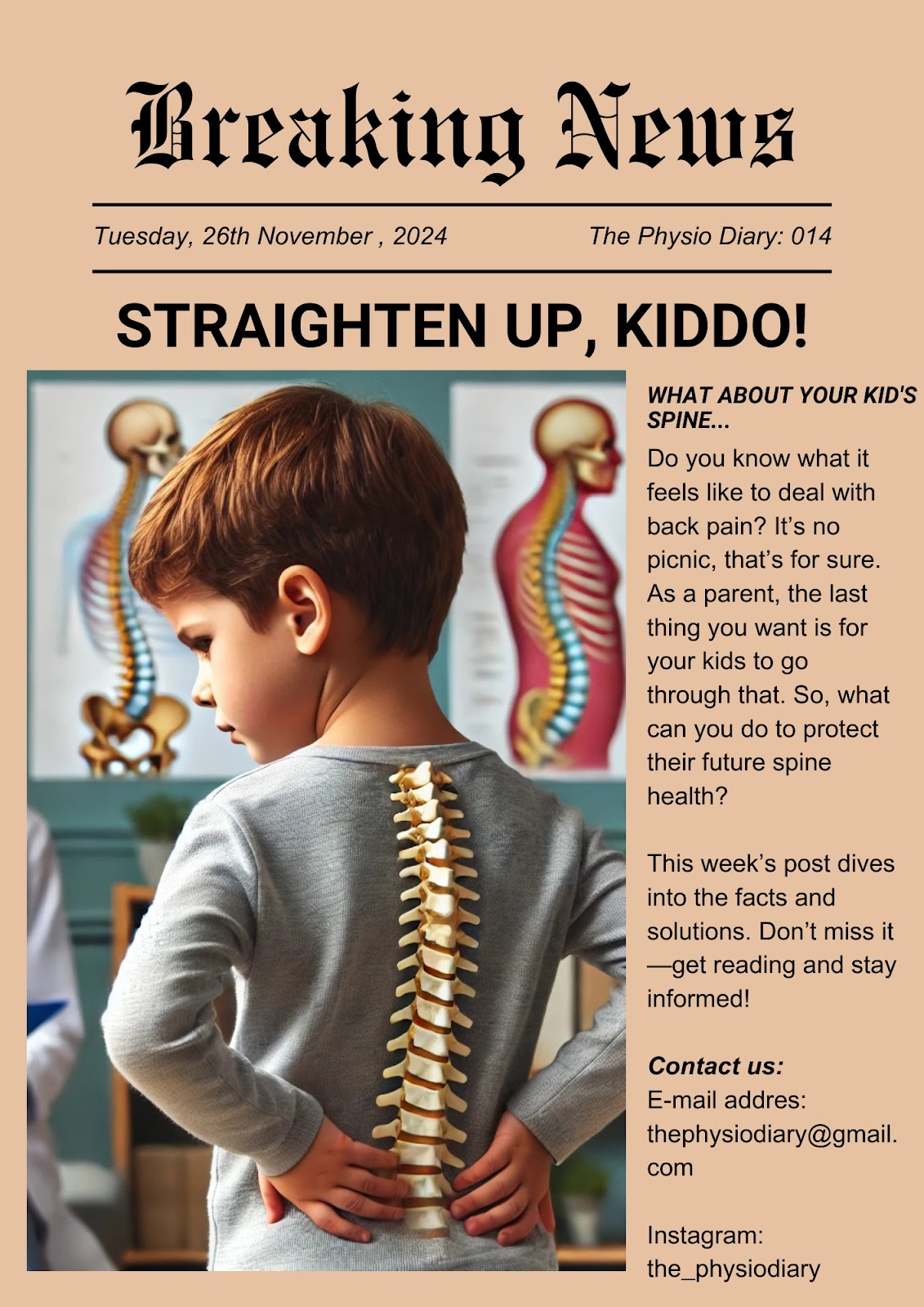STRAIGHTEN UP, KIDDO!
Do You Know the Impact of Scoliosis on Children?
Scoliosis can feel just as isolating for a child as dealing with a serious condition like HIV. While this is not true for every child, those with severe scoliosis often struggle with self-esteem—especially when faced with treatments like wearing braces for long hours.
Let’s explore what scoliosis is, why it happens, and how to manage it in a way that supports both the body and the mind.
What Causes Scoliosis in Children?
Unlike non-structural scoliosis (caused by temporary factors like posture), scoliosis in children is usually structural, meaning the problem lies in the spine itself.
The most common cause—Idiopathic Scoliosis—accounts for 80% of cases. Surprisingly, it doesn’t have a known cause! The curvature often appears out of nowhere. Here’s something to think about, though: Could poor positioning during early childhood contribute? While there’s no proof, it’s a good reason to keep kids sitting and moving in healthy ways to protect their spines.
Three Types of Idiopathic Scoliosis
Infantile (0-3 years): Rare and often resolves on its own.
Juvenile (4-10 years): Progresses quickly during growth spurts.
Adolescent (10-18 years): The most common type, usually noticed during puberty.
Other Causes of Scoliosis
Congenital Scoliosis: Abnormal spinal development in the womb, often linked to conditions like heart or kidney issues.
Neuromuscular Scoliosis: Common in children with conditions like cerebral palsy or muscular dystrophy, where weak muscles can’t support the spine.
Syndromic Scoliosis: Rare, affecting less than 1% of the population, often as part of genetic syndromes.
The Emotional Impact of Treatment
Treating scoliosis is essential, but it can affect a child’s self-esteem—especially when braces are involved. These devices must often be worn under clothes for 16-23 hours a day. Imagine the challenge of explaining this to classmates or managing discomfort!
Other treatment options include:
Observation: Sometimes, an “off” spinal curve just needs monitoring, often with X-rays.
Surgery: Reserved for severe cases to correct alignment.
Physiotherapy: Focuses on strengthening core muscles to naturally support the spine.
A Quick Posture Check!
Take a second—how are you sitting right now? Is your back supported? If not, adjust your position, stretch a little, and remember: good posture isn’t just for kids!
Looking Ahead
If you’re an adult with back pain, you know how tough it can be. Teaching your child proper posture now can spare them years of discomfort. Slouching might feel comfortable, but it’s a silent attack on the spine, waiting to strike later in life.
The good news? Scoliosis in children, no matter the degree, can be managed effectively with early detection and proper care.
What’s Coming Next?
We’ve wrapped up our series on scoliosis, just in time for the holiday season! What festive topics do you think we’ll explore next? Let us know your guesses—we might just feature your idea in an upcoming post!
📩 Contact us at thephysiodiary@gmail.com

Comments
Great 👍